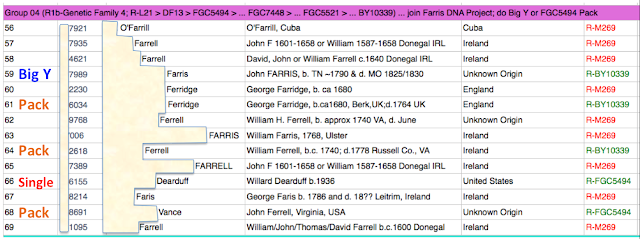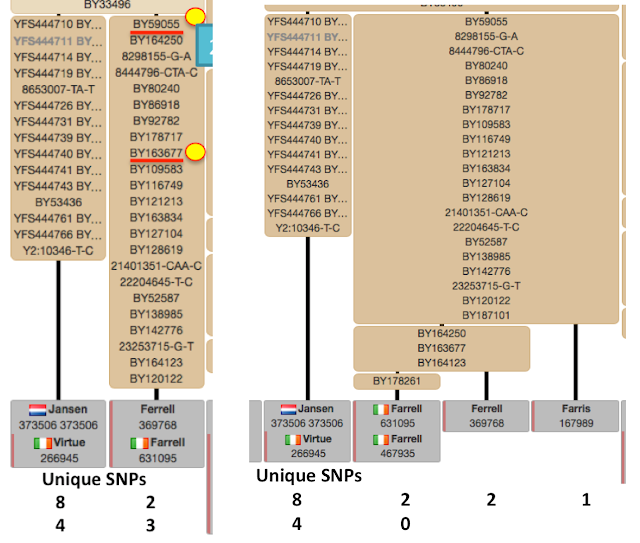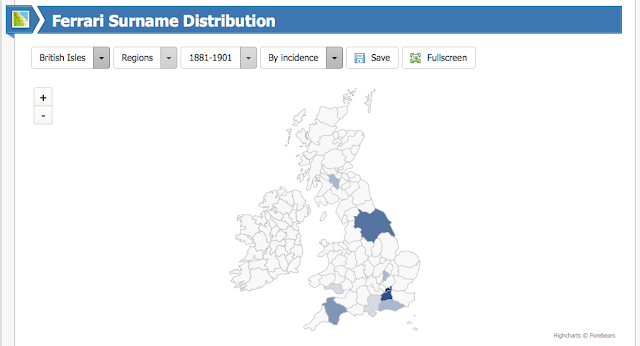Below is the foreword to the book and a synopsis of the chapters. It would make a great Christmas gift to yourself!!
Maurice Gleeson
Dec 2018
Foreword
Sam Hanna’s book on the (O) Farrells/Ferrells spans an incredible 1,400 years, set in the context of the political, social and economic landscape of Ireland. To explain the origin of the Donegal O’Farrells, he goes back to the Early Christian era c.655, and identifies an eponymous ancestor among the Cenél Conaill called Firghil who was related to Colum Cille. To dispel any doubt about the antiquity of the name, he cites references in manuscripts such as the ‘Annals of the Four Masters’in 1087, the ‘Annals of Connaught’ in 1014 and the ‘Book of Fenagh’ in c.950.
The main focus of the book is on the Farrells in the post-Plantation period, in particular in the barony of Tirhugh in southeast Donegal from c.1626/7. It was in this region that the family came to prominence, securing land leases and forming marriage alliances. As leaseholders on the Hamilton and Conolly estates around Ballyshannon and Donegal Town, they acquired some status by the eighteenth century; they were not only “strong farmers” but they had all the trappings of gentry, playing prominent roles in the church, land management and business.
The book is more than a history of one family. In a lucid and flowing style, Sam Hanna charts the social and political history of west Ulster, including the barony of Tirhugh, incorporating the Rising of 1641, the bitter antagonism between Orangemen and Ribbonmen, the impact of emigration and the relationship between landlords and tenants. He has employed the traditional tools of the genealogist and historian – wills, maps, leases, army lists, hearth money rolls, and church records. Using a comprehensive range of tables, maps and flow charts, he has identified significant Farrells in other parts of Ulster, which he has included in a database, thus providing the groundwork for further study.
The author has also presented new methods of research using modern technology. His use of DNA evidence has opened up challenging avenues for genealogists across the globe, thus creating an international dimension, far beyond Tirhugh. As the study of family history has expanded into a popular growth industry of the digital era, this monumental study will provide a welcome template for genealogists everywhere. As a classical piece of research and a model of historical analysis and methodology, there is no doubt that Sam Hanna’s book stands as the “gold standard” in relation to the study of family history. He has raised the bar in the demanding discipline of family research and historians are universally grateful to him for his magnificent achievement.
Dr Seán Beattie, Editor, Donegal Annual Culdaff, Co. Donegal, Ireland
January 2018
Synopsis
Chapter one seeks to trace the evolution of the Uí Fhearghail/(O) Farrells in two of their earliest points of origin – contemporary Longford and Donegal, from the end of the first millennium to the early modern era. The origin of the Farrells in southeast Donegal – closely associated with the seventeenth century Plantation – is proposed.
The second chapter places the seventeenth century Plantation of Ulster into historical context, with a particular focus on the area relevant to Farrell involvement – Donegal, west Tyrone and the city of Derry/Londonderry. The following two chapters present a database of Donegal Farrells for the same period, and outline their participation in contemporary events.
Chapter five endeavours to collate west Ulster Farrell records for the eighteenth century, and proposes the original nucleus in the barony of Tirhugh from which the Farrells subsequently expanded. It attempts to understand the decline of Farrell fortunes – although numerically successful, from an extended family with considerable position and influence in the seventeenth century, to that of mostly undertenants by the end of the eighteenth.
The following chapter proposes a classification of Tirhugh Farrells and outlines their evolution during the eighteenth and nineteenth centuries. A comprehensive database of eighteenth century Tirhugh Farrells is presented. The ensuing detailed discussion of the use of DNA testing to investigate Farrell origins is complemented by a comprehensive analysis of the results.
Subsequent chapters feature the early genealogical details of each of the Tirhugh Farrell dynasties – Original, Rossnowlagh, Ballybulgan, Legnanornoge, Ballydermot, Ballintra and Virginia. Many descendants are traced from the eighteenth century to the present day, with insights given into the lives of some individuals. In addition, some of the salient aspects of southeast Donegal’s political, social, and physical landscapes during the nineteenth and early twentieth centuries are featured. The final chapter summarises the main findings of the work and makes suggestions for further research.















